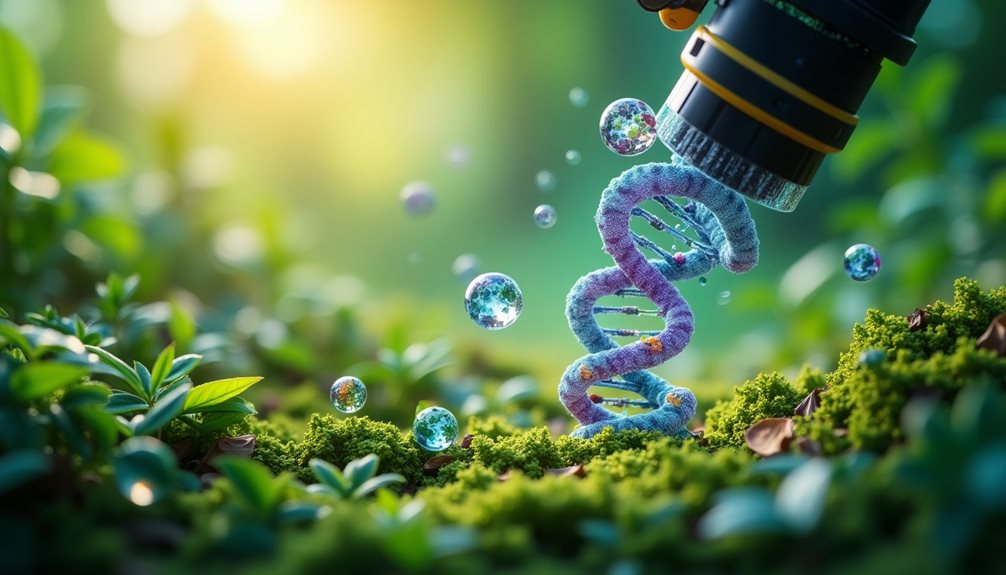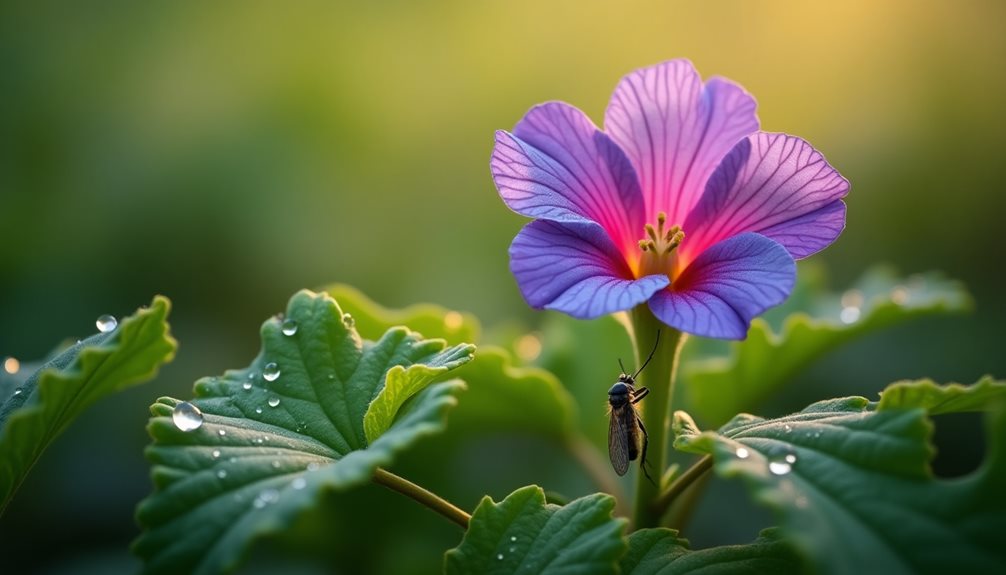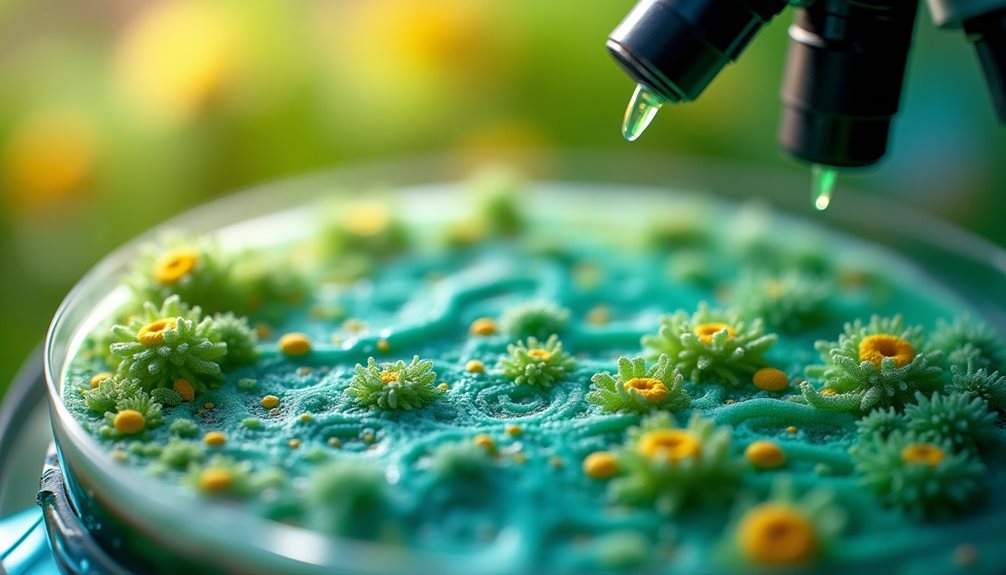Table of Contents
ToggleEssential Biological Concepts

Biology, as a fundamental science, encompasses a variety of essential concepts that form the foundation of understanding living organisms. Among these concepts, cellular metabolism stands out as a critical process that enables cells to convert nutrients into energy, supporting life functions and growth.
This intricate network of biochemical reactions is crucial for maintaining homeostasis and facilitating adaptive responses to environmental changes. Additionally, biological classification provides a systematic framework for organizing and categorizing the vast diversity of life on Earth.
Biology is a core science that investigates the structure, function, growth, and evolution of living organisms. It covers everything from microscopic cells to entire ecosystems. One of the most important ideas in biology is cellular metabolism. In Russian, this is called клеточный метаболизм (klet-och-nyy met-a-bo-lizm).
Cellular metabolism is the collection of chemical reactions that happen inside cells to keep them alive and functioning. These reactions allow cells to break down nutrients from food and turn them into energy, which is used for everything from moving muscles to growing new cells. The energy produced comes mainly in the form of a molecule called ATP, or аденозинтрифосфат (a-de-no-zin-tri-fos-fat).
Some key points about cellular metabolism:
- It includes two main processes: catabolism (катаболизм, ka-ta-bo-lizm), where molecules are broken down to release energy, and anabolism (анаболизм, a-na-bo-lizm), where energy is used to build new molecules.
- Cellular metabolism is essential for гомеостаз (go-me-o-staz), or homeostasis, which means keeping the internal environment of the organism stable.
- Metabolic pathways help organisms adapt to changes in their environment, like temperature or food supply.
Another major topic in biology is biological classification, known in Russian as биологическая классификация (bi-o-lo-gich-es-ka-ya klas-si-fi-ka-tsi-ya). This is the system scientists use to organize and group all living things based on their similarities and differences.
Key facts about biological classification:
- It helps us understand the relationships between different species and trace the history of life on Earth.
- Living things are put into groups called taxa (таксоны, tak-so-ny), such as kingdom (царство, tsar-stvo), phylum (тип, tip), class (класс, klass), order (отряд, o-tryad), family (семейство, se-mey-stvo), genus (род, rod), and species (вид, veed).
- The system of naming species with two words (like Homo sapiens) is called binomial nomenclature (биноминальная номенклатура, bi-no-mi-nal’-na-ya no-men-klat-u-ra).
Biology’s focus on cellular metabolism and classification gives us a deeper understanding of what living things are, how they survive and grow, and how they fit into the larger web of life. These concepts connect the tiniest cell to the wide variety of organisms found around the world.
Cell Structure and Function / Строение и функции клетки — [Stro-YEN-ye ee Foonk-TSII KLYET-kee]
Cells, the fundamental units of life, exhibit remarkable complexity and specialization that underpin their diverse functions within living organisms.
Key Cell Parts and Their Functions
- Cell Membrane:
- Russian: клеточная мембрана (klye-TOCH-naya mem-BRA-na)
- Definition: This is like the cell’s skin. It protects the cell and controls what goes in and out.
- Cytoplasm
- Russian: цитоплазма (tsee-toh-PLAZ-ma)
- Definition: The jelly-like fluid that fills the cell and holds organelles in place.
- Nucleus
- Russian: ядро (ya-DRO)
- Definition: The control center of the cell. It holds DNA, which has instructions for the cell.
- Mitochondria
- Russian: митохондрии (mee-ta-KHON-dree-ee)
- Definition: The “powerhouse” of the cell. They make energy for the cell.
- Ribosomes
- Russian: рибосомы (ree-bo-SO-my)
- Definition: Tiny machines that build proteins.
- Endoplasmic Reticulum
- Russian: эндоплазматическая сеть (en-do-plaz-ma-TEE-ches-ka-ya SYET’)
- Definition: A network that helps make and move proteins and fats.
- Golgi Apparatus
- Russian: аппарат Гольджи (ap-pa-RAT GOL’-dzhy)
- Definition: Packages and sends out proteins and other materials.
Russian Terms Table
| English Term | Russian (Cyrillic) | Phonetic | English Definition |
|---|---|---|---|
| Cell | клетка | KLYET-ka | Basic unit of life |
| Cell membrane | клеточная мембрана | klye-TOCH-naya mem-BRA-na | Protective barrier of the cell |
| Cytoplasm | цитоплазма | tsee-toh-PLAZ-ma | Jelly inside the cell |
| Nucleus | ядро | ya-DRO | Control center, contains DNA |
| Mitochondria | митохондрии | mee-ta-KHON-dree-ee | Makes energy |
| Ribosomes | рибосомы | ree-bo-SO-my | Build proteins |
| Endoplasmic reticulum | эндоплазматическая сеть | en-do-plaz-ma-TEE-ches-ka-ya SYET’ | Protein/lipid network |
| Golgi apparatus | аппарат Гольджи | ap-pa-RAT GOL’-dzhy | Ships proteins/materials |
| Organelle | органелла | or-ga-NEL-la | Specialized part inside a cell |
| DNA | ДНК | de-en-KA | Genetic material |
Learning these words will help you talk about biology in Russian and understand how cells work in both English and Russian!
Genetics and Heredity
Genetics is the scientific study of heredity—how traits and characteristics are passed from parents to their children—as well as the natural variations found within those traits. This branch of science helps us understand why family members share similarities, why siblings can look different from one another, and why some diseases or unique features are inherited while others are not. Genetics provides insight into both the consistency and the diversity seen across all living things.
 DNA: The Blueprint of Life
DNA: The Blueprint of Life
At the core of genetics is DNA (ДНК — дезоксирибонуклеиновая кислота), a molecule that contains all the genetic instructions for building and maintaining an organism. DNA has a distinctive double helix structure (двойная спираль), resembling a twisted ladder, with four types of chemical bases (азотистые основания):
- Adenine (аденин)
- Thymine (тимин)
- Cytosine (цитозин)
- Guanine (гуанин)
These bases pair up in a specific way—A with T, and C with G—forming sequences that act as a biological code. DNA is found in nearly every cell’s nucleus (ядро клетки) except red blood cells. An amazing fact: If all the DNA from just one human cell (клетка) were unwound and stretched out, it would reach approximately two meters in length.
Genes and Alleles: Units of Heredity
A gene (ген) is a specific segment of DNA that holds instructions for a particular trait, such as eye color or blood group. Each gene can exist in different forms called alleles (аллели). For instance, the gene responsible for eye color may have an allele for brown eyes and another for blue eyes. The unique combination of alleles you inherit from your parents determines your individual traits. Humans have around 20,000–25,000 genes (гены), yet the number of possible alleles is even greater due to genetic diversity.
Genotype and Phenotype: Your Genetic Identity and Appearance
The genotype (генотип) is the set of alleles you possess for one or more genes; it’s your internal genetic code. For example, for a trait such as the ability to roll your tongue (умение сворачивать язык в трубочку), your genotype could be two alleles for “can roll,” two for “cannot roll,” or one of each.
The phenotype (фенотип) is the outward expression of your genotype—the features you actually observe, such as height, hair color, or susceptibility to certain diseases. The environment (окружающая среда) also plays a role in shaping the phenotype. For example, a person may inherit genes for tall stature but might not reach their genetic potential if they experience poor nutrition during childhood.
Mendelian Inheritance: Basic Laws of Genetics
The foundation of genetics lies in the discoveries of Gregor Mendel (Грегор Мендель), who studied how traits are passed down by experimenting with pea plants. Mendel’s principles revealed that:
- Dominant alleles (доминантные аллели) can mask the presence of recessive alleles (рецессивные аллели).
- Traits are inherited independently from each other in most cases (независимое наследование признаков).
Although Mendel’s work was overlooked during his life, it eventually became the cornerstone of modern genetics.
The Importance of Genetic Variation
Genetic variation (генетическое разнообразие) refers to differences in DNA sequences among individuals in a population. This variation is vital—it allows populations to adapt and survive changing environments, fuels evolution (эволюция), and ensures the health and resilience of species. Without genetic variation, populations become vulnerable to diseases and environmental changes.
 Population Genetics: Genes Across Generations
Population Genetics: Genes Across Generations
Population genetics (популяционная генетика) examines how gene frequencies change within groups of organisms over time. This field enables scientists to track inherited diseases, study evolutionary processes, and develop new medical treatments tailored to individual genetic profiles.
Key Russian Terms and Phrases:
- Генетика — Genetics
- Наследственность — Heredity
- Ген — Gene
- Аллель — Allele
- Генотип — Genotype
- Фенотип — Phenotype
- ДНК — DNA
- Двойная спираль — Double helix
- Азотистые основания — Nitrogenous bases
- Наследственные заболевания — Hereditary diseases
- Окружающая среда — Environment
Understanding genetics and heredity unlocks the secrets behind why individuals differ, how traits are passed through generations, and how modern science can diagnose diseases or create personalized therapies based on DNA. Genetics continues to deepen our knowledge of life’s complexity and interconnectedness.
Ecology and Environmental Science
Ecology, a critical branch of biological science, examines the interactions between living organisms and their environments. This field is essential for understanding ecosystem dynamics and the importance of biodiversity conservation. Studying these interactions helps identify how organisms adapt and thrive within their habitats, influencing environmental health and sustainability.
Ecology is a vital field within biological sciences that focuses on the relationships between living things—such as plants, animals, and microorganisms—and their environments. Understanding these relationships is crucial for maintaining healthy ecosystems and ensuring the long-term survival of species, including humans.
Ecosystem Dynamics
Ecosystem dynamics involve the movement of energy and nutrients through food chains and food webs. For example, plants (producers) use sunlight to create energy through photosynthesis. Herbivores (primary consumers) eat the plants, and carnivores (secondary or tertiary consumers) eat the herbivores. Decomposers like bacteria and fungi break down dead organisms, returning nutrients to the soil.
Example: In a Russian forest (лес, les), trees provide food and shelter for animals like squirrels (белка, byelka) and birds (птицы, ptitsy).
Biodiversity Conservation
Biodiversity refers to the variety of life on Earth. Conservation efforts aim to protect endangered species, preserve habitats, and maintain genetic diversity. This is essential for ecosystem health, resilience to environmental changes, and providing resources for humans.
Example: Protecting the Siberian tiger (амурский тигр, amurskiy tigr) in Russia involves preserving its forest habitat and supporting anti-poaching measures.
Human Impact on Ecosystems
Human activities such as deforestation, pollution, and climate change can disrupt ecological balance. Managing waste properly, reducing carbon emissions, and supporting reforestation are actions that help reduce negative impacts.
Example: Limiting plastic use (пластик, plastik) helps prevent water pollution (загрязнение воды, zagryazneniye vody).
![]()
Key Russian Terms in Ecology and Environmental Science
| Russian (Cyrillic) | English Phonetic | English Definition |
|---|---|---|
| экология | ekolohiya | Ecology |
| окружающая среда | okruzhayushchaya sreda | Environment |
| биоразнообразие | bioraznoobraziye | Biodiversity |
| экосистема | ekosistema | Ecosystem |
| загрязнение | zagryazneniye | Pollution |
| сохранение | sokhraneniye | Conservation |
| обитание | obitaniye | Habitat |
| вымирание | vymiraniye | Extinction |
| пищевая цепь | pishchevaya tsep | Food chain |
| устойчивое развитие | ustoychivoye razvitie | Sustainable development |
| природные ресурсы | prirodnyye resursy | Natural resources |
| изменение климата | izmeneniye klimata | Climate change |
| переработка | pererabotka | Recycling |
| защита окружающей среды | zashchita okruzhayushchey sredy | Environmental protection |
These insights contribute to fostering a deeper appreciation for nature, encouraging individuals to engage in practices that protect our planet’s fragile ecosystems.
Human Anatomy and Physiology
Human anatomy and physiology encompass the intricate structures and functions of the human body, revealing the complexity of biological systems that sustain life. Grasping these concepts illuminates the remarkable coordination within our bodies and fosters a deeper appreciation for health and disease.
Muscle Tissue:
Muscle tissue is responsible for movement, posture, and heat production. There are three main types: skeletal, cardiac, and smooth muscle. Skeletal muscles attach to bones and enable voluntary movements like walking or lifting objects. Cardiac muscle, unique to the heart, contracts rhythmically to pump blood. Smooth muscle is found in the walls of organs such as the intestines and blood vessels, controlling involuntary actions like digestion and blood flow.
Nervous System:
The nervous system orchestrates all bodily activities by transmitting electrical signals. It is divided into the central nervous system (brain and spinal cord) and peripheral nervous system (nerves throughout the body). The brain processes information, initiates responses, and stores memories. The spinal cord acts as a conduit for signals between the brain and body. This system also regulates reflexes, controls senses, and manages complex behaviors.
Circulatory System:
The circulatory system delivers oxygen, nutrients, hormones, and removes waste products. The heart acts as a pump, propelling blood through a vast network of arteries, veins, and capillaries. Red blood cells carry oxygen from the lungs to tissues, while white blood cells defend against pathogens. Platelets help with blood clotting. This system also helps regulate body temperature and pH balance.
Respiratory System:
The respiratory system provides oxygen, essential for cellular metabolism, and expels carbon dioxide, a waste product. Air enters through the nose or mouth, travels down the trachea, and reaches the lungs. Tiny air sacs called alveoli facilitate gas exchange with the bloodstream. Breathing rate adjusts automatically based on activity levels and carbon dioxide concentration in the blood.
Digestive System:
The digestive system breaks down food into nutrients the body can use for energy, growth, and repair. Digestion begins in the mouth with chewing and saliva. The stomach uses acids and enzymes to further break down food. The small intestine absorbs most nutrients through its lining, which contains millions of tiny projections (villi) to increase surface area. The large intestine absorbs water and forms waste for elimination.
| English | Russian (Cyrillic + Phonetic) | Meaning |
|---|---|---|
| Muscle tissue | Мышечная ткань (Myshyechnaya tkan’) | Tissue responsible for movement, posture, and heat production. |
| Skeletal muscle | Скелетная мышца (Skeletnaya myshca) | Muscle attached to bones enabling voluntary movement. |
| Cardiac muscle | Сердечная мышца (Serdechnaya myshca) | Muscle of the heart responsible for rhythmic contractions. |
| Smooth muscle | Гладкая мышца (Gladkaya myshca) | Muscle in walls of organs regulating involuntary actions. |
| Nervous system | Нервная система (Nervnaya sistema) | System transmitting electrical signals, coordinating body activities. |
| Central nervous system | Центральная нервная система (Tsentral’naya nervnaya sistema) | Brain and spinal cord, main processing centers. |
| Peripheral nervous system | Периферическая нервная система (Perifericheskaya nervnaya sistema) | Network of nerves outside brain and spinal cord. |
| Circulatory system | Кровеносная система (Krovenosnaya sistema) | System delivering oxygen, nutrients, and removing waste via blood. |
| Respiratory system | Дыхательная система (Dykhatelnaya sistema) | Organs and structures involved in gas exchange (oxygen/carbon dioxide). |
| Digestive system | Пищеварительная система (Pishchevaritelnaya sistema) | Organs breaking down food and absorbing nutrients. |
| Alveoli | Альвеолы (Al’veoly) | Tiny air sacs in lungs where gas exchange occurs. |
| Villi | Ворсинки (Vorsinki) | Small projections in the small intestine that increase surface area for absorption. |
| Red blood cells | Эритроциты (Eritrotsity) | Cells that carry oxygen from lungs to tissues. |
| White blood cells | Лейкоциты (Leykotsity) | Cells that defend the body against infection and disease. |
| Platelets | Тромбоциты (Trombotsity) | Cell fragments that help in blood clotting. |
Each of these systems interacts closely with others, creating a finely tuned network that enables humans to move, think, grow, and thrive.
Botany: The Study of Plants

Botany is the branch of biology concerned with plants, their structure, growth, reproduction, metabolism, development, diseases, and evolutionary relationships. Plants are fundamental to life on Earth, forming the base of most food chains and producing the oxygen we breathe. In Russian, botany is called ботаника.
One of the primary goals in botany is plant classification (классификация растений). Scientists use taxonomy (таксономия) to organize the immense diversity of plants into groups based on shared features. These groups include flowering plants (цветковые растения), conifers (хвойные растения), ferns (папоротники), mosses (мхи), and algae (водоросли). Each group exhibits unique adaptations suited to various environments, from rainforests to deserts.
Botanists study plant anatomy (анатомия растений) and physiology (физиология растений) to understand how different organs—roots (корни), stems (стебли), leaves (листья), flowers (цветы)—function and cooperate. For example, roots anchor the plant and absorb water and nutrients, while leaves are the main site for photosynthesis (фотосинтез).
Photosynthesis is a key topic in botany. This process allows plants to capture solar energy using chlorophyll (хлорофилл) and convert carbon dioxide (углекислый газ) and water (вода) into glucose (глюкоза) and oxygen (кислород). Photosynthesis supports nearly all life on our planet by providing food for herbivores and oxygen for animals. Without it, ecosystems would collapse.
Botany also explores plant ecology (экология растений), examining how plants interact with each other and their environment. Plants play vital roles in stabilizing soils, regulating climate, cycling nutrients, and supporting biodiversity.
Some key Russian phrases:
- растения – plants
- семена – seeds
- опыление – pollination
- размножение – reproduction
- виды растений – plant species
Studying plants has led to discoveries in medicine, agriculture, and environmental science. For instance, many medicines are derived from plant compounds (растительные соединения), and understanding crops helps improve food security.
Botany deepens our understanding of the natural world. It highlights how interconnected life is, showing that the health of plants impacts the health of entire ecosystems—including humans.
Microbiology and Pathogens
Microbiology is a fundamental area of biological science focused on the study of microorganisms—tiny life forms invisible to the naked eye. These include bacteria (бактерии), viruses (вирусы), fungi (грибы), and protozoa (простейшие). Microbiologists investigate where these organisms live, how they function, and their role in both the environment and human health.
A major focus of microbiology is understanding pathogens (патогены)—microbes capable of causing disease. Pathogens are organized into several main groups:
- Bacteria (бактерии): Single-celled organisms found everywhere, from soil to the human gut. While many are harmless or beneficial, some cause diseases like tuberculosis (туберкулёз) and strep throat (ангина).
- Viruses (вирусы): Much smaller than bacteria, viruses require a host cell to reproduce. They are responsible for illnesses such as influenza (грипп), measles (корь), and COVID-19.
- Fungi (грибы): This group includes yeasts (дрожжи) and molds (плесень). Fungi can cause infections like athlete’s foot (микоз стопы) and thrush (молочница).
- Protozoa (простейшие): Single-celled organisms often found in water. Some protozoa, such as Plasmodium (малярийный плазмодий), cause malaria (малярия).
Microbes do not exist in isolation—they interact with each other and with their environments. These microbial interactions (микробные взаимодействия) can be competitive or cooperative, influencing ecosystems and human health. For example, beneficial bacteria in the gut (кишечная микрофлора) help with digestion and protect against harmful invaders.
Understanding how pathogens cause disease involves studying their disease mechanisms (механизмы заболевания). Bacteria may produce toxins (токсины), viruses can kill or alter cells, and fungi might invade tissues. The process by which a pathogen enters, survives, and multiplies in the body is called pathogenesis (патогенез).
The immune response (иммунный ответ) is the body’s defense system against infection. It involves recognizing foreign microbes, attacking them, and remembering them for faster responses in the future. Key components include white blood cells (лейкоциты), antibodies (антитела), and inflammatory reactions (воспалительные реакции).
Microbes are not just associated with disease; they are also central to many biotechnological applications (биотехнологические применения). In medicine, bacteria produce antibiotics (антибиотики) and insulin (инсулин). In agriculture, certain microbes promote plant growth or protect crops from pests. In industry, yeasts are used in baking and brewing.
By studying microbiology, scientists gain crucial insights into infection control, vaccine development, antibiotic resistance (антибиотикорезистентность), and environmental sustainability. This knowledge is essential for improving global health and managing the ever-evolving challenges posed by pathogens.
Together, these elements highlight the significance of microbiology in health and disease management.
Frequently Asked Questions
How Can I Improve My Russian Biology Vocabulary Effectively?
To improve Russian biology vocabulary effectively, one can utilize the flashcards technique for memorization and practice vocabulary quizzes regularly. This approach fosters retention and reinforces understanding, ultimately enhancing language proficiency in the subject matter.
Are There Any Online Resources for Biology Terms in Russian?
Numerous online resources enhance understanding of biology terminology in Russian. Online dictionaries provide definitions, while biology forums facilitate discussions among learners, allowing for collaborative exploration and enrichment of vocabulary, fostering a deeper appreciation for the subject.
What Are the Most Common Mistakes in Translating Biology Terms?
Common translation errors often arise from overlooking context importance, leading to misunderstandings or inaccuracies. Without a clear grasp of terminology nuances, translators may misrepresent concepts, hindering effective communication in the scientific community.
How Do I Pronounce Complex Biology Terms in Russian?
When maneuvering complex terms, one can enhance pronunciation by utilizing phonetic guides and seeking pronunciation tips. These resources help learners articulate challenging words clearly, fostering confidence and encouraging exploration of the linguistic intricacies in their studies.
Can I Find Bilingual Dictionaries Specifically for Biology?
It is possible to find bilingual biology dictionaries that cater to Russian scientific terminology. These resources can greatly aid learners in understanding complex terms, enhancing their grasp of biological concepts in both languages effectively and efficiently.



